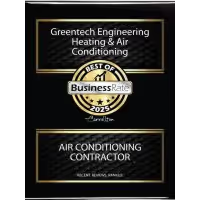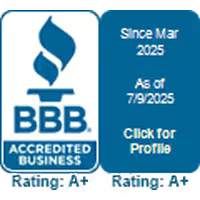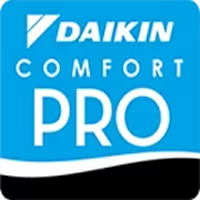.jpeg)
Carrollton Air Quality: 2025 Critical Insights for a Healthier Home
Are you breathing truly clean air in your Carrollton home? As we look towards 2025, understanding and actively managing the air quality around you becomes more critical than ever for your family's health and comfort. From seasonal allergens to everyday indoor pollutants, the air inside your home can be a complex mix. At Greentech Engineering, we believe in straightforward, honest expertise, not sales pitches.
Understanding Carrollton's Air Quality Landscape
Living in Carrollton brings unique air quality considerations. Factors like local weather patterns, seasonal pollen counts, and even construction activity can influence the air you breathe outdoors. But what about inside your home? Often, indoor air can be even more polluted than outdoor air, trapping contaminants and circulating them throughout your living space.
What is the AQI and Why Does it Matter to You?
The Air Quality Index (AQI) provides a daily snapshot of how clean or polluted your local air is, and what associated health effects might be a concern. While the AQI primarily focuses on outdoor air, consistent exposure to poor outdoor conditions can lead to pollutants finding their way indoors. Understanding Carrollton's typical AQI trends helps you recognize when outdoor air might be contributing to your indoor air challenges, signaling a need for robust home air quality solutions.
Common Pollutants Affecting Carrollton Homes
Beyond the general outdoor AQI, numerous common pollutants impact indoor air quality in Carrollton residences. These include:
- Allergens: Pollen, dust mites, pet dander, and mold spores are prevalent in the North Texas climate, triggering allergies and asthma.
- Volatile Organic Compounds (VOCs): Found in cleaning products, paints, new furniture, and air fresheners, VOCs can cause respiratory irritation and other health issues.
- Particulates: Dust, dirt, and microscopic particles from cooking or outdoor sources can circulate through your HVAC system.
- Bacteria & Viruses: Airborne pathogens can be circulated through your home, especially during colder months.
The Hidden Dangers of Indoor Air Pollution
Many homeowners are unaware that indoor air can be two to five times more polluted than outdoor air. Because we spend up to 90% of our time indoors, the quality of your home's air has a direct and significant impact on your family's health. Poor indoor air quality can lead to:
- Increased allergy symptoms (sneezing, watery eyes, congestion)
- Exacerbated asthma and other respiratory conditions
- Fatigue and difficulty concentrating
- Headaches and dizziness
- Long-term health risks from chronic exposure to certain pollutants
Ensuring excellent indoor air quality isn't just about comfort; it's a critical investment in your family's well-being and long-term health.
Greentech Engineering's Solutions for Superior Carrollton Indoor Air Quality
As your trusted Carrollton HVAC experts, Greentech Engineering offers a comprehensive suite of solutions designed to purify your home's air and protect your family. Our approach is always transparent, focusing on diagnosing your specific needs and recommending the most effective, straightforward solution.
Comprehensive Air Quality Assessments
The first step to cleaner air is understanding what you're up against. Our experts conduct thorough indoor air quality assessments to identify specific pollutants, humidity imbalances, and potential sources of contamination in your home. This personalized insight allows us to tailor the perfect strategy for your unique situation.
Advanced Air Filtration Systems
Upgrade beyond basic filters. We offer high-efficiency MERV-rated filters and HEPA filtration systems that capture significantly more airborne particles, including dust, pollen, pet dander, and mold spores, preventing them from recirculating through your home.
Whole-Home Air Purifiers & UV Lights
For advanced protection, consider a whole-home air purification system. These integrate directly with your HVAC system to actively neutralize airborne pathogens, VOCs, and odors. UV-C lights, installed within your ductwork, effectively kill bacteria, viruses, and mold spores as air passes through.
Humidity Control: Humidifiers & Dehumidifiers
Maintaining optimal indoor humidity levels (typically between 30-50%) is crucial for comfort and health. Whole-home humidifiers prevent dry air discomfort and static, while dehumidifiers combat excessive moisture, preventing mold growth and dust mite proliferation—common issues in the humid Carrollton climate.
Professional Duct Cleaning Services
Over time, your home's ductwork can accumulate significant amounts of dust, allergens, pet dander, and even mold. Our professional duct cleaning services thoroughly remove these contaminants, ensuring your HVAC system circulates truly clean air, improves system efficiency, and extends its lifespan.
Ventilation Solutions for Fresh Air Exchange
Sometimes, the best solution is to bring in more fresh air without losing energy efficiency. We offer advanced ventilation solutions that introduce filtered fresh air into your home while expelling stale, polluted indoor air, maintaining a healthy balance.
Your Path to Cleaner Air with Greentech Engineering
Don't let hidden pollutants compromise your family's health and comfort. Greentech Engineering is committed to providing Carrollton residents with expert, honest, and straightforward solutions for superior indoor air quality. We're not just selling products; we're providing peace of mind.
Ready to breathe easier and enjoy a healthier home in Carrollton? Contact Greentech Engineering today for a personalized air quality assessment and discover the ideal solutions for your family. We simplify the complex, ensuring you get the reliable HVAC services you deserve.

Flexible Financing Options
Explore our range of flexible financing options designed to suit your needs and budget.













